If you’re just getting started then you need a driver that will keep the ball in the fairway and give you respectable distance even when you don’t hit it on the sweet spot.
With this in mind, I took a look at dozens of drivers and I think the best driver for beginners is the Ping G430 Max.
But that’s not the only option out there for you, here’s my breakdown of your best options…
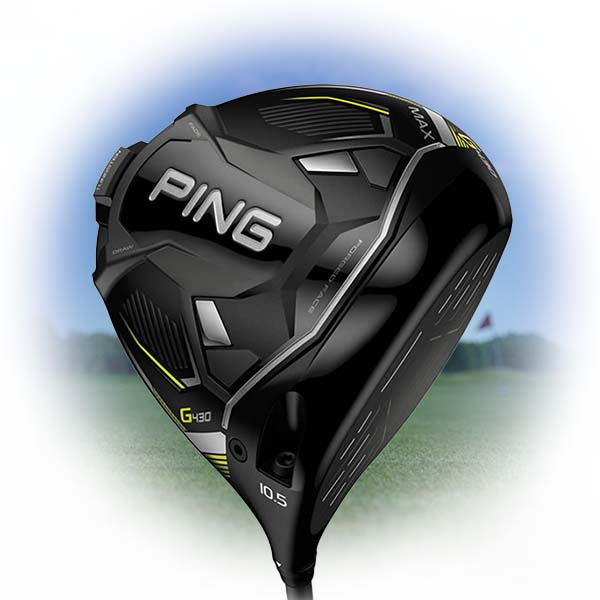
1. Ping G430 Max
As one of the most forgiving drivers on the market, the Ping G430 Max is perfect for beginners that are just learning how to hit the sweet spot consistently.
Ping G425 Max Specs
- Lofts: 9°, 10.5°, 12° (same for left-handed)
- Lie: 58.5° (adjustable from -1° to +2°)
- Head Size: 460cc
- Swing Weight: D3
- Adjustable Hosel: Yes (-1.5° to +1.5° loft)
- Adjustable Weights: Yes
- Stock Shafts:
- PING Alta CB 55 Slate (graphite)
- PING Tour 65 (graphite)
- Aldila Rogue White 130 MSI 70 (graphite)
- Mitsubishi Tensei AV Orange 55, 65 (graphite)
- PING Alta Distanza (graphite)
According to Ping, the G430 is longer than its predecessor. In my testing, it was, but only by a very small amount (which could have just been attributable to variances in my swing).
That being said, they certainly improved the sound of the club. The G425 was not a pleasant sound but the G430 has a nice muted crunch that makes you feel good about your strike. This may not directly affect your shot, but it can help the confidence a little.
Pros
- Most forgiving driver we tested
- Improved since previous G425
Cons
- Not as long as some of the other options here
It has a rear weight (26g) and gives you the option to move the weight to change the club to have either a draw, fade, or neutral bias. This makes it a great option for those of you who want a little help controlling the side spin.
One last note for those of you on a budget, since there isn’t a huge difference in performance between the clubs, you could save some money and go for last year’s Ping G425 Max.
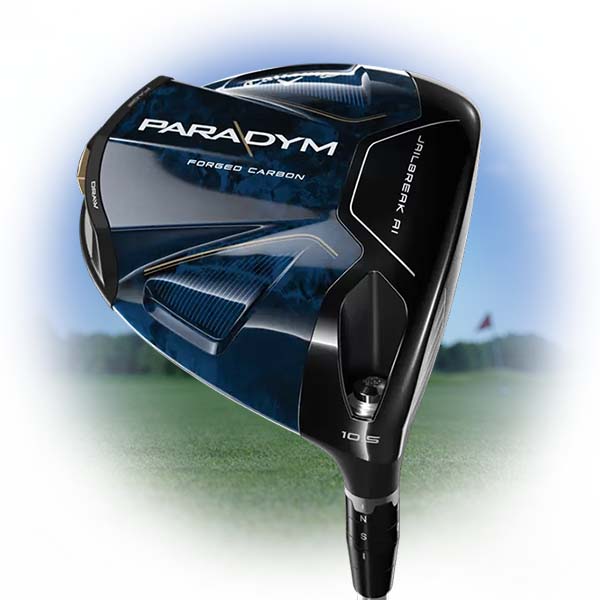
2. Callaway Paradym
The Paradym is the latest and greatest from Callaway and if it’s within your budget might be the best combination of length and forgiveness on the market today.
When I first tested the new Callaway Paradym I thought maybe the launch monitor was wrong. But after going back to my old driver for a few swings I was able to confirm that this driver was absolutely launching the ball.
I was getting great ball speed and distance numbers, even when I missed the sweet spot. This club and the next pick below really outpaced the rest of them in terms of forgiveness and ball speed on mis-hits.
Callaway Paradym Specs
- Lofts: 9°, 10.5°, 12° (Adjustable -1°, +1°, 0° and +2°)
- Lie: 57° (adjustable from -1° to +2°)
- Head Size: 460cc
- Swing Weight: D3
- Adjustable Hosel: Yes
- Adjustable Weights: Yes (15g Sliding Weight)
- Stock Shafts:
- Aldila Ascent PL Blue 40 Graphite
- Project X HZRDUS Gen 4 Silver 50 Graphite
- Project X HZRDUS Gen 4 Silver 60 Graphite
- Project X HZRDUS Gen 4 Black 60 Graphite
- Fujikura Ventus TR Blue 6 Graphite
The only reason this club is in second place is that at $600 MSRP, it may not be the most sensible purchase for most beginners, although they would certainly benefit from it. In addition, I think the Ping G430 Max is just a little more forgiving on mishits even though it doesn’t go as far as the Paradym on well-struck shots.
Pros
- High MOI and lots of forgiveness
- Longest driver we tested
- The somewhat classic look is much more appealing than other Callaway drivers
Cons
- Very expensive
- Slightly less forgiving than the Ping G430
The Paradym also comes in a “draw” version for those of you that tend to slice the ball. Generally, I am not a fan of draw bias drivers because I think they encourage bad swing habits, but if you’re a high handicapper with a slice that just wants to have fun on the weekends and not work on improving your swing, then the draw version of this club is the perfect option for you.
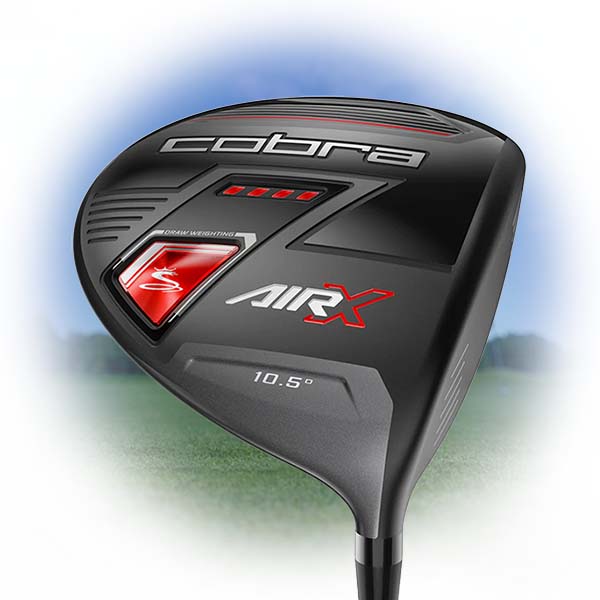
3. Cobra AIR-X Straight Neck Driver
The Cobra is an affordable option that still has a good amount of forgiveness that will help the beginner keep in the ball in play.
In addition to being a lightweight driver that can help beginners increase their swing speed, the Cobra Air-X is also a very affordable option.
When it comes to drivers, the tricky part is that the most forgiving drivers that are great for beginners also tend to be the most expensive. So while this one isn’t as forgiving as the top pick above, it’s a great affordable option.
Cobra Air-X Straight Neck Specs
- Lofts: 9.5°, 10.5°
- Lie: 60°
- Head Size: 460cc
- Swing Weight: D1.5
- Adjustable Hosel: No
- Adjustable Weights: No
- Stock Shafts:
- Cobra Ultralite 40 (Stiff, Regular, Lite)
Like many of the top drivers this year, this club makes good use of carbon in the club head to help reduce overall weight and redistribute weight to improve forgiveness.
Another thing I like about this club is that while it is clearly targeted at beginners, it doesn’t have an offset face. Unless you have a slice and don’t want to improve your swing, an offset club can do more harm than good.
This club has a little extra heel weighting to help you close the clubface but no offset and a traditional look at address. Both of these are great for beginners.
One big negative (but also a reason the club is less expensive) is the absence of clubface adjustability. This is a nice thing to have for a beginner.
Pros
- Less expensive than most
- Improved aerodynamics supposed to increase swing speed
Cons
- Not as forgiving as more expensive models
- Not adjustable
Another downside here is that this club won’t quite cut it if you start to improve. You’ll need a sturdier shaft and heavier clubhead as your swing speed increases.
Of course, if you aren’t a slow swing speed player then you should check out this next budget option as it might be better for you.
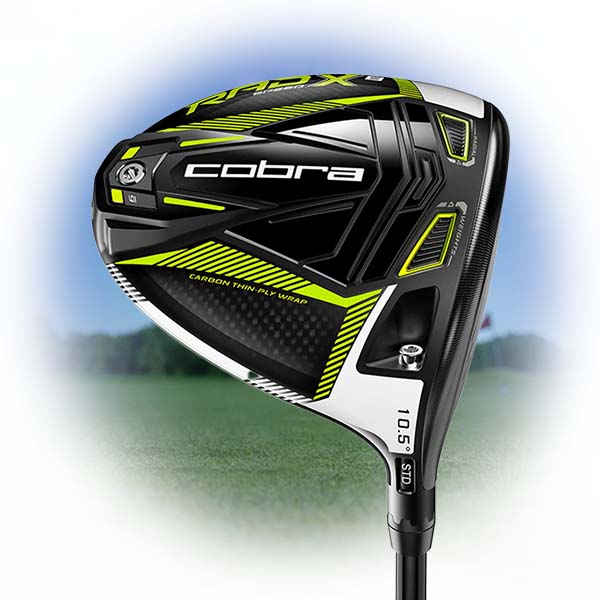
4. Cobra RADSpeed XB
The RADSpeed XB is designed specifically for high handicappers with a high launch, low spin, and lots of forgiveness. With a recent price drop, it’s a great bargain too.
Perhaps you’re the type of player who is looking to upgrade the driver in your bag, but don’t necessarily want to break the bank to do so. We would encourage you to consider the Cobra RADSpeed driver.
Cobra KING RADspeed XB Specs
- Lofts: 9°, 10.5°, 12° (Adjustable -1.5° to -1.5°)
- Lie: 57.5°, 58.5°, 59.5°
- Head Size: 460cc
- Swing Weight: D2.5 to D3.5 (depending on shaft selection)
- Adjustable Hosel: Yes
- Adjustable Weights: No
- Stock Shafts:
- Fujikura Motore X F3
- Project X HZRDUS Smoke RDX Blue
- Project X Even Flow Riptide
The RADSpeed XB is the model in the RADSpeed lineup that has a bigger footprint and more weight towards the rear which makes it more forgiving and has a higher launch. It also features an internal weight pad positioned low and back to promote higher launch and straighter ball flights.
Beginners probably should avoid the “regular” RADSpeed driver as it is less forgiving than the XB.
One thing to be aware of with this club is that it is louder than most. Whether or not you like that is more of a personal preference thing than it is related to actual driver performance. But I have heard some golfers say that a louder sound makes them feel confident hitting the driver and makes them swing smoother because they don’t feel the need to kill it to get that big sound.
Like most of the clubs on this list, this one is also adjustable so you can get a pro to help you dial in the right settings to maximize your distance and help correct some ball flight issues.
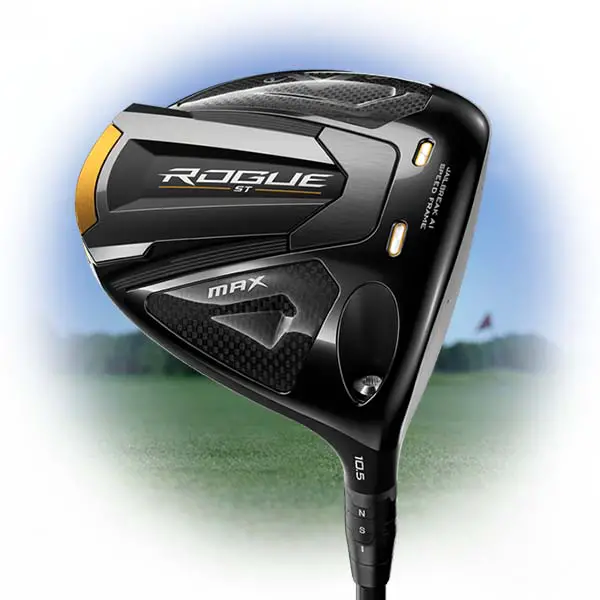
5. Callaway Rogue ST Max D
Callaway makes a lot of good clubs. But, there’s no better club for getting rid of a slice than the Rogue ST Max.
For a golfer struggling with shot shape, you might need a little assistance. Whether you’re trying to eliminate a small slice or add a few yards through a baby draw, the Callaway Rogue ST Max is ready.
Callaway Rogue ST Max Specs
- Lofts: 9° (Adjustable 8°-11°), 10.5° (Adjustable 9.5°-12.5°), 12° (Adjustable 11°-14°)
- Lie: 59° (adjustable from -1° to +2°)
- Head Size: 460cc
- Swing Weight: D3
- Adjustable Hosel: Yes
- Adjustable Weights: No
- Stock Shafts:
- Mitsubishi Tensei AV Blue 55 Graphite 55g
- Mitsubishi Tensei AV Blue 65 Graphite 65g
- Mitsubishi Tensei AV White 65 Graphite 65g
- Fujikura Ventus Blue 5 (non-velocore) Graphite 50g
- Fujikura Ventus Blue 6 (non-velocore) Graphite 60g
With this club, it’s all about weight. Here, you can place up to 26 grams of weight in the clubhead that ultimately controls the center of gravity.
Pros
- Multiple loft options (which are also adjustable) for right and left-handed golfers
- Some of the lowest spin levels you’ll find on a premium driver.
Cons
- Not an option for high handicappers looking for substantial help.
At max-weight, you have a low center of gravity towards the back of the club. This effectively enlarges the sweet spot and becomes more forgiving of contact at the heel—a big help for eliminating a slice.
Check out my full review of the Callaway Rogue ST Max D here.

6. Titleist TSi 1
The TSi1 is built to be light and makes it much easier for slower swing-speed players to generate club speed.
The Titleist TSi 1 is a lightweight driver with a design tailored to increase swing speed regardless of what yours is when you start. In other words, playing this driver is an almost guaranteed solution for adding a little bit of juice to your tee game.
Titleist tsI 1 Specs
- Lofts: 9°, 10°, 12° (10° only for left-handed)
- Lie: 58.5°
- Head Size: 460cc
- Adjustable Hosel: Yes
- Adjustable Weights: No
- Stock Shafts:
- Aldila Ascent UL 41g, 44g, 47g, 48g
One of the most important parts of the club is the shaft. The TSR2 driver has a graphite shaft which is very lightweight and strong. This helps the clubhead move faster through the air and hit the ball harder. The club also has a special grip that helps you hold the club tighter and make sure your hands don’t slip when you swing.
The TSR2 driver also has a few adjustable parts that can be changed to fit your swing. The adjustable hosel allows you to change the angle of the club head, which can help you hit the ball straighter or with more of a draw or fade.
The adjustable weighting system allows you to move weight around the clubhead to change the balance and feel of the club. This can help you find the perfect setup for your swing.
3 Drivers High Handicappers Should Avoid
TaylorMade Stealth and Stealth 2
There was a lot of hype around the first Stealth driver because of its carbon face and the claims about forgiveness and distance.
But unfortunately, the Stealth (and now the Stealth 2) really don’t live up to the hype. The Stealth did give you good distance IF you hit the center of the clubface, but it lacked the forgiveness of other clubs on the market so if you mis hit it, you lost of lot of yards.
That alone makes it a terrible candidate for beginners.
Titleist TSR3
The TSR 3 isn’t a bad driver. But it’s not designed for high handicappers.
You might get more distance on sweet spot hits but you’ll lose a lot more on shots that don’t hit the center of the clubface.
In addition, this club is designed for a lower ball flight. This may be great for a good player that has an optimized attack angle on their drives, but for the high handicapper, this means a lot less distance on most hits.
Powerbilt TPS Supertech
I am only listing this club here because I have seen it recommended for beginner players on other sites.
The biggest appeal of this club is the low cost. But unfortunately, this is a case of getting what you pay for. If you’re here looking for a club that can improve your game, this isn’t it.
You’ll be much better off keeping your current driver and saving up for a used copy of one of the clubs listed above. You can find some great deals on the used market and you’ll get far better results than with a low-budget club like this.
What Is Forgiveness?
Forgiveness in a driver is how club manufacturers describe how much distance (or more specifically…ball speed) is lost when you miss the center of the clubface as well as whether the club adds side spin for an off-center strike.
The less distance loss or direction miss happens in an off-center strike, the more “forgiving” the club is considered.
Forgiveness isn’t something that is measured as a specific number and manufacturers don’t like to release specific testing data because it might hurt their sales and marketing claims. So it becomes more of something that we try to observe in testing by looking at ball speed numbers on off-center hits compared to sweet spot hits.
Is More Forgiveness Better For Everyone?
Most golfers (99% of you) would benefit from more forgiveness in your driver.
For elite level golfers, the things that add forgiveness can hurt their maximum distance by increasing launch angle or spin. So these golfers, that hit the center ofthe clubface almost every time, may opt for clubs that position the weight in such a way to lower spin even if it reduces forgiveness.
Many club manufacturers will have different versions of a club model, including versions that are designed for these high level players.
But don’t let the marketing hype make you think these are a good option for a lot of golfers. If you’re not an elite level golfer (in the plus handicap range) these drivers probably aren’t best for you. You’ll be far better off with the most forgiving version
This might be a little different for clubs like irons or wedges where controlling trajectory becomes more important for more skill levels. In that case, you may want to choose something with slightly less forgiveness to have more control.
But when it comes to drivers, choosing the most forgiving driver is the way to go for almost everyone.

